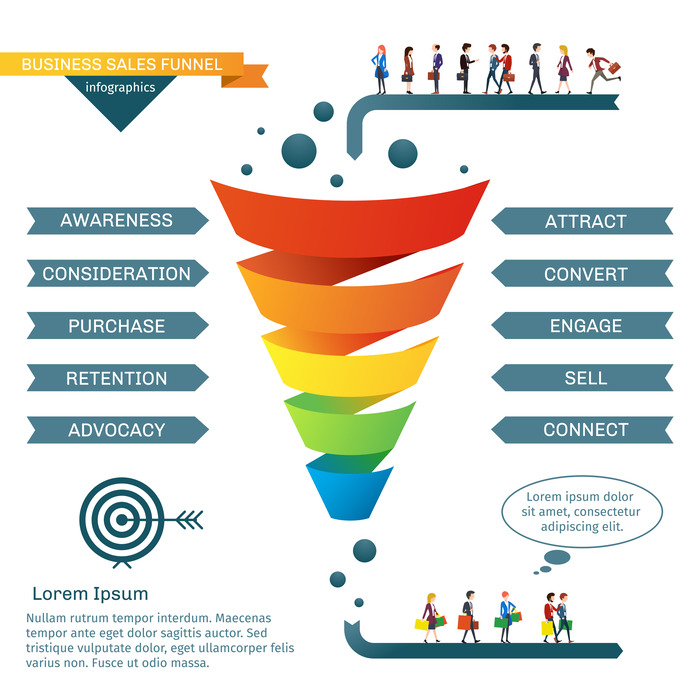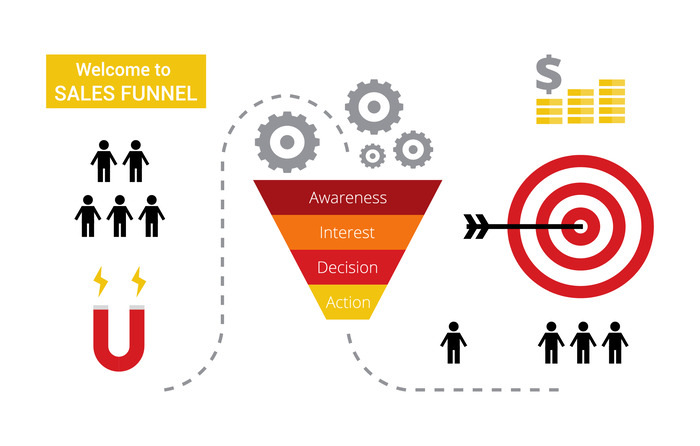The online sales funnel is a crucial element in digital marketing, acting as a roadmap for businesses to transform casual browsers into actual purchasers. However, mastering this process is not always straightforward. One of the key challenges businesses face includes identifying the right target audience, crafting engaging content, and enhancing the conversion rate. These challenges can impede success in digital marketing.
A common solution to these hurdles is to find technical support. Leveraging professional assistance can help businesses navigate the complexities of the sales funnel more effectively. In this context, we’ll delve into various tips and strategies to address and resolve these issues. We’ll examine each segment of the sales funnel meticulously, providing a detailed guide on overcoming these frequent obstacles.
Whether you’re refining an existing funnel or building one from scratch, this article offers valuable insights. By finding technical support and applying these tips, you can transform challenges into opportunities for growth and improvement in your online sales endeavors.
This approach will not only streamline your digital marketing efforts but also enhance your ability to connect with and convert your target audience.
Understanding the Online Sales Funnel
The online sales funnel is like a journey that guides someone from just knowing about a product to buying it. Think of it as four steps: Awareness, Interest, Decision, and Action.
- Awareness: This is where it starts. The person finds out about the product for the first time. Maybe they saw an ad or a social media post.
- Interest: Now they’re curious. They start looking up more about the product, like reading blog posts or watching videos.
- Decision: Here, they’re almost ready to buy. They might be comparing prices or looking at different options.
- Action: This is the final step where they actually buy the product.
Each stage is important because it helps move the person along this journey. If any stage isn’t working well, the person might stop and not make it to the end. It’s like a smooth ride; if there’s a bump, they might get off.
Common Roadblocks in Online Sales Funnel
In this journey, businesses can face some problems:
- Ineffective Lead Generation: This is like not having enough people starting the journey. If your ads or social media posts aren’t catching enough attention, not many will know about your product.
- Poor Lead Nurturing: If you don’t keep people interested, they might forget about your product. This is like telling a story but not keeping it exciting enough for people to stay.
- Conversion Challenges: Sometimes, even if people are interested, they don’t end up buying. Maybe the price is too high, or the checkout process is too complicated.
- Technical Impediments: These are like roadblocks in the journey. If your website crashes or is slow, people might leave before buying.
These issues can really affect sales. For example, if a website is slow, studies show that many people will leave the site before buying. It’s like having a shop with a broken door; people can’t get in to buy anything.
Understanding these problems is the first step to fixing them and making the sales journey smooth.
Assessing Roadblocks
To fix problems in your online sales funnel, you first need to figure out what they are. Tools like Google Analytics can show you where people are dropping off – maybe they leave after seeing the price or during checkout. Customer feedback is another goldmine.
By asking customers or people who didn’t buy why they made their choice, you can learn a lot. Sales metrics, like how many people actually buy after visiting your site, are also crucial.
It’s important to look at the whole journey, not just one part. Another part of the puzzle to guiding readers in the right direction involves blog posts. Problems at the start can affect the end. For example, if people don’t get the right info at the Awareness stage, they might lose interest quickly.
Overcoming Roadblocks
To get more people starting on their journey (lead generation), think about using targeted content. For example:
- If you’re selling sports gear, write blog posts about fitness tips. Email campaigns can help keep people interested (lead nurturing). Send personalized emails based on what they looked at on your site.
- Improving how many people buy (conversion rates) can be done through A/B testing, where you try two versions of a webpage to see which works better. Making your website easier to use and having clear, persuasive calls-to-action (“Buy Now”, “Learn More”) also help.
- Using technology like CRM (Customer Relationship Management) tools and automation can make the sales process smoother.
These tools can help track customer behavior and automate some of the communication, making sure the right message reaches the right person at the right time.
Case Studies and Best Practices
Let’s look at some real examples. A clothing retailer might have seen a drop in sales and used analytics to find out that their checkout process was too long.
By simplifying it, they saw an increase in sales. Another example could be a tech company that used targeted ads to reach people interested in tech news, successfully bringing more visitors to their site.
From these cases, we learn that understanding the customer journey, using data to make decisions, and constantly testing and improving can lead to overcoming sales funnel challenges. Each part of the funnel needs attention, and the right mix of strategies can make a big difference.
Future Trends and Innovations
The landscape of online sales funnel management is constantly evolving with emerging trends like AI-driven analytics and adaptive content. AI technologies are revolutionizing how businesses understand customer behaviors and preferences, enabling more personalized and effective marketing strategies.
Adaptive content, which changes based on who is viewing it, is becoming increasingly important in engaging customers at different stages of the sales funnel.
Staying agile and responsive to changing consumer behaviors is crucial. As digital technology advances, so do the expectations of consumers for personalized, seamless experiences. Businesses need to be ready to adapt their strategies to stay ahead in the competitive online marketplace.
Conclusion
Throughout this article, we’ve explored the critical elements of an online sales funnel, from understanding its stages – Awareness, Interest, Decision, and Action – to identifying and overcoming common roadblocks. We’ve discussed the importance of effective lead generation, nurturing strategies, and the need for continuous conversion optimization.
The key takeaway is the importance of continuously monitoring and adapting your sales funnel to meet changing customer needs and technological advancements. By leveraging tools like AI analytics and keeping an eye on future trends, businesses can create more effective and efficient sales processes.
We encourage you to apply these strategies and insights in your business. Remember, a well-optimized online sales funnel is crucial for converting prospects into loyal customers and achieving long-term success in the digital marketplace.


